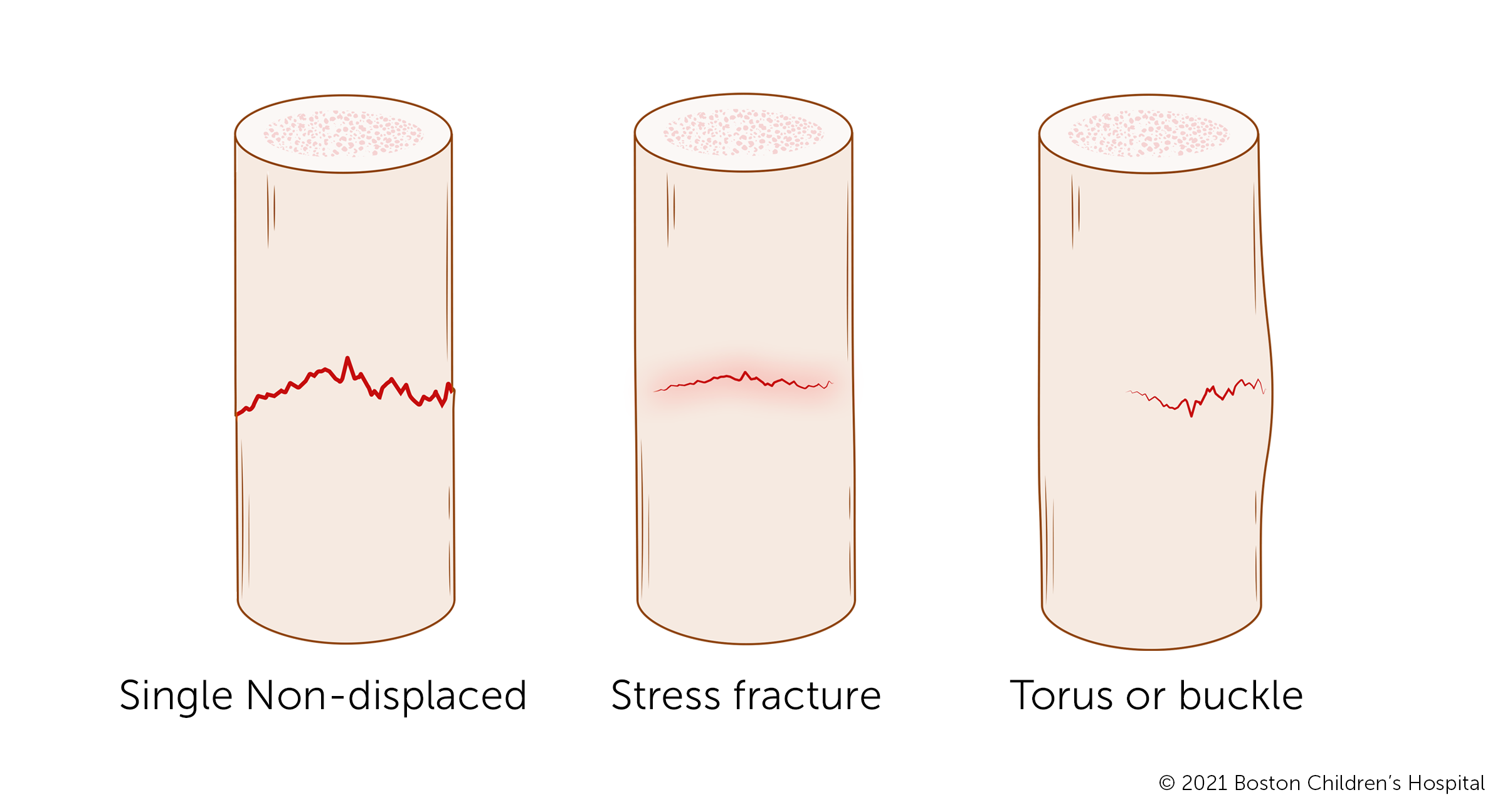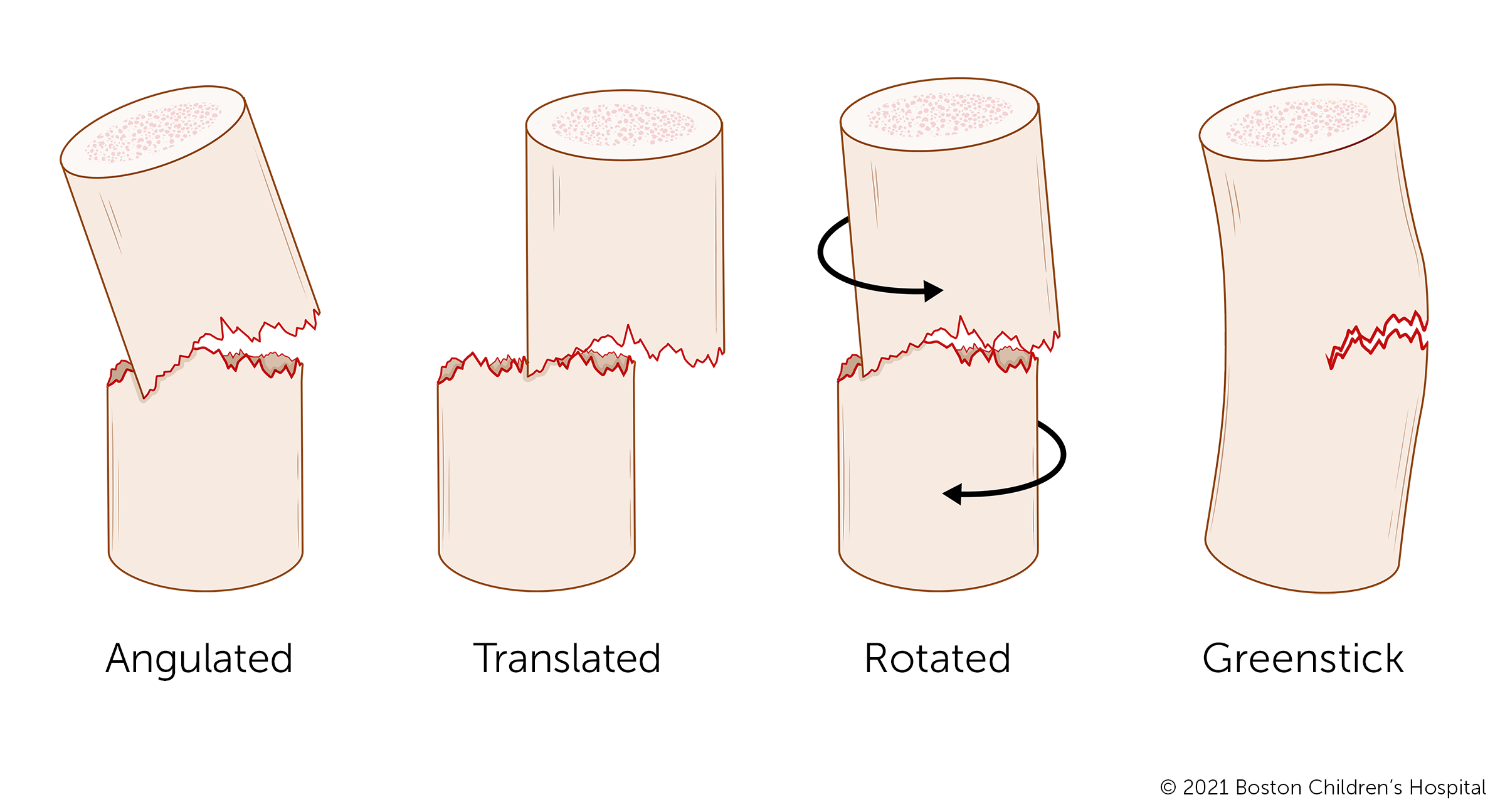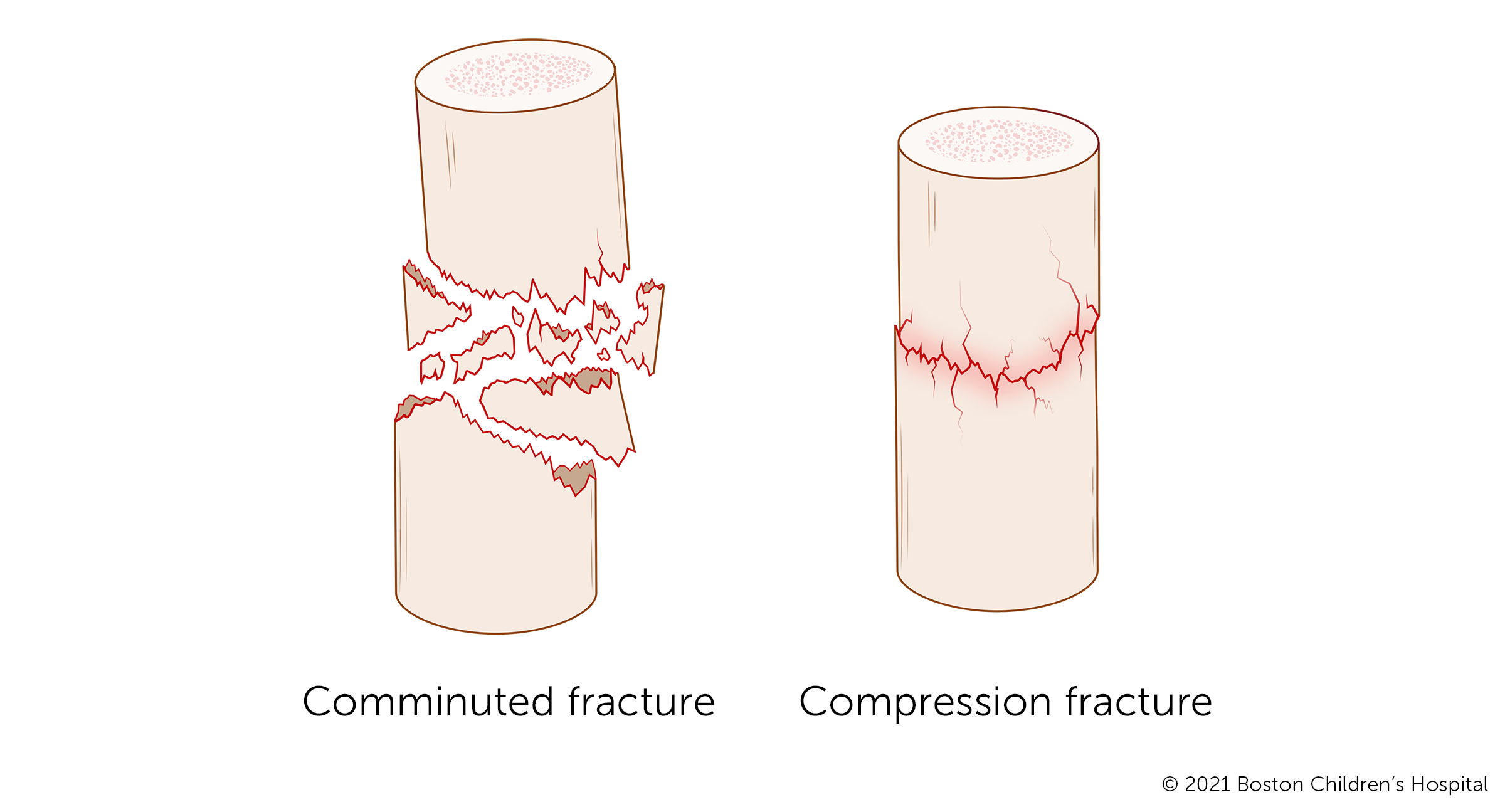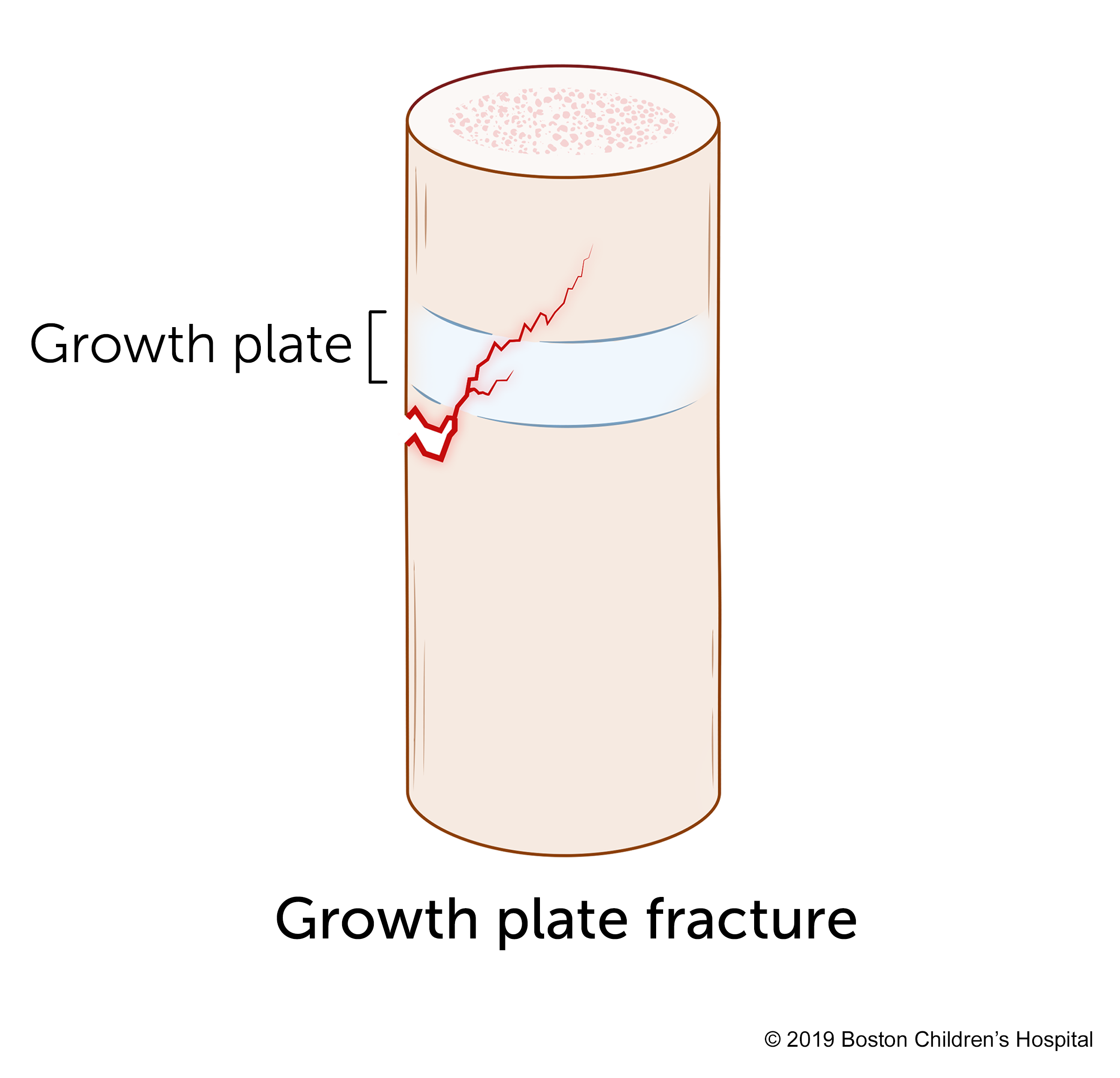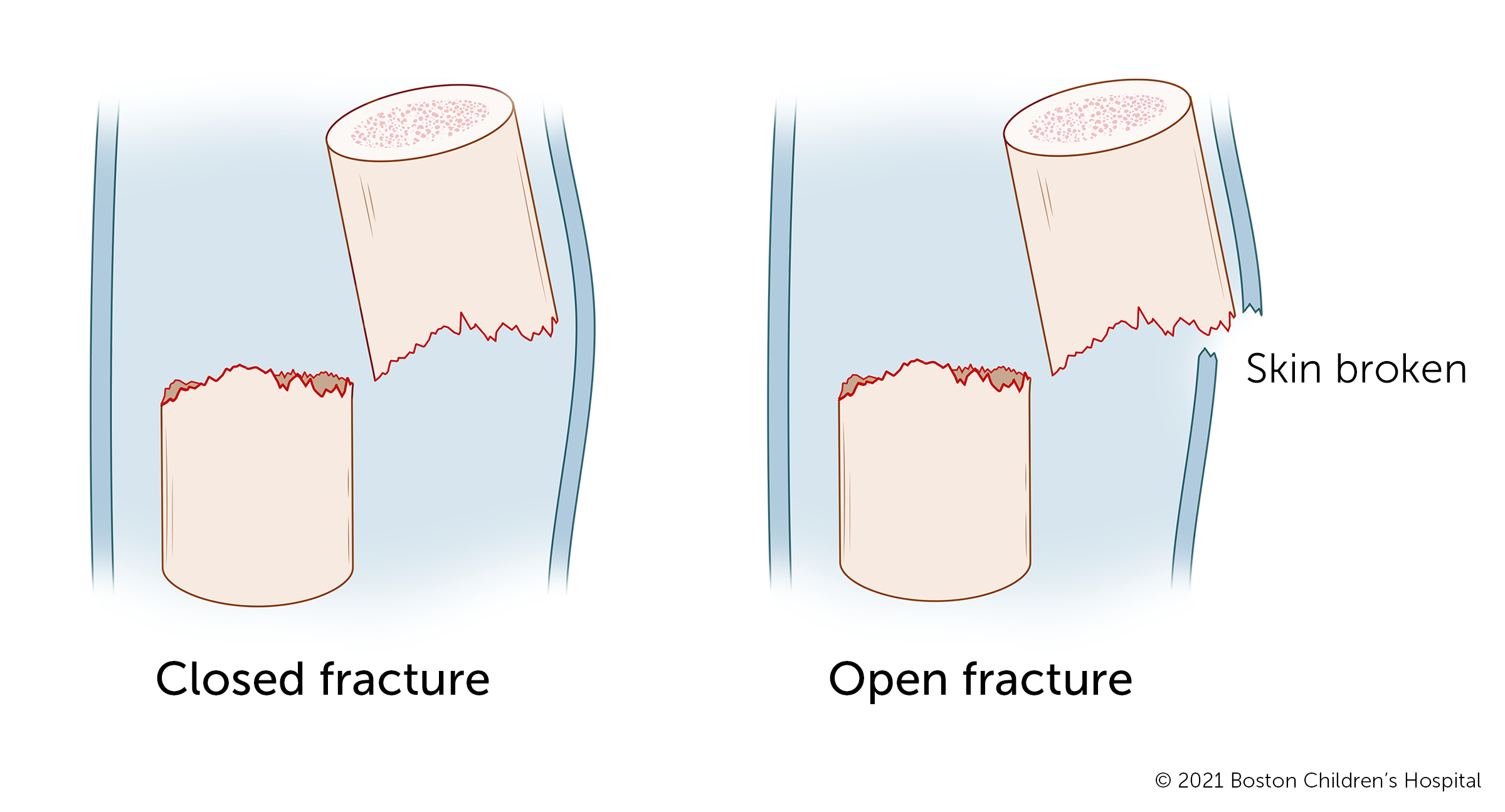Fractures | Diagnosis & Treatments
How are fractures diagnosed?
Children's bones are more flexible and have more healing potential than adult bones. This is good news for recovery, but it also means your child should get medical attention as soon as possible to ensure the bone is in the correct position as it heals.
Your child’s doctor will closely examine the injured area for tenderness, redness, and swelling and will order diagnostic imaging tests to determine what type of treatment is appropriate. Diagnostic testing for fractures may include:
- x-ray
- computed tomography scan (CT, CAT scan)
- magnetic resonance imaging (MRI): Some fractures (such as stress fractures) don't show up on an X-ray until a few weeks after the bone starts hurting. An MRI can pick up smaller fractures before they get worse.
- bone scan
What are the treatments for a fractured bone?
Treatment will be based on the type of fracture, its severity, and your child's age. In most cases, fractures in children are treated with a sling, splint/brace, cast, or walking boot. These immobilize the injured bone while it heals.
Splints
Doctors often put a splint on a newly broken bone if they are concerned about swelling. If the injured area swells, a cast could become too tight and reduce blood circulation. Typically, the splint will be replaced with a cast once swelling has gone down. Splints are also used for minor fractures that don’t require a cast.
Boot
A broken ankle, foot, or leg may be stabilized with an Aircast® boot. The Aircast boot immobilizes the foot and ankle but can be removed for bathing or icing under certain circumstances. Depending on the severity of the break and stage of healing, it may be OK to remove the boot for short periods for icing or bathing.
Casts
Casts are stronger than splints and provide more protection to the injured area. Casts have two layers: a soft inside layer that rests against the skin and a hard, outer layer that protects the injured bone and prevents movement while the bone heals. The type of cast used will depend on the type of fracture.

Reduction
A reduction is a non-surgical procedure to set the bone so it will heal properly. The doctor realigns the broken bone from outside the body and puts the injured limb in a cast or splint. Reductions are usually performed in an emergency department with medications that manage pain and make your child sleepy or sedated so they won’t remember the procedure.
Surgery
Severe or unstable fractures that can’t be set properly with a reduction require surgery. To increase the chances that the bone will heal in the correct position, your child's doctor will decide very early in treatment whether to operate. In some cases, however, if the area around the fracture is swollen, the procedure may have to wait until the swelling goes down.
The child will be sedated or under general anesthesia in the operating room and the doctor will set the bone into place. A pin may be used to hold the pieces of bone securely in place while the bone heals. If the fracture involves a joint, the surgeon will realign the joint and hold it in place with screws, a plate, or a pin.
Other treatments
Traction uses a gentle, steady pulling motion in a specific direction to allow the ends of the broken bone to align and heal. In some cases, traction reduces painful muscle spasms.
Medication is sometimes used to help control pain and muscle spasms. If a fracture is open, antibiotics are used to prevent infection.
How we care for fractures
Every year the Orthopedics and Sports Medicine Center at Boston Children’s Hospital treats thousands of children, adolescents, and young adults with fractures of all complexities. Thanks to our pediatric expertise, we can precisely diagnose conditions related to the growing musculoskeletal system and optimal care plans.
At our Orthopedic Urgent Care Clinics, we care for injuries that require prompt medical attention but are not serious enough to need emergency room care. We offer urgent care services in four locations: Boston, Waltham, Peabody, and Weymouth.
Patient resources
Our experts in orthopedic care have created a series of helpful guides that cover different types of fractures, clinical treatment, home care, and expected recovery times.
Shoulder, upper arm
Elbow
Forearm
- bicoritical distal radial fracture
- distal radius buckle fracture
- proximal radius fracture
- distal radius growth plate fracture
- both-bone forearm fracture
- radial shaft fracture and greenstick fracture
Hand, wrist
Lower leg
- tibia fracture, toddler fracture, and Cozen’s fracture
- tibial shaft fracture and tibia-fibula fracture
- tibial tubercle fracture
Ankle, foot

